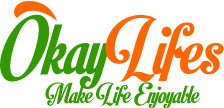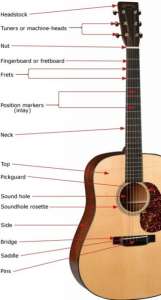This article is for those who are still thinking about getting a guitar yet still don’t have it. Moreover, for those who aren’t artists, but trust me being one will be both more fun and simpler than you figure out. Today, I’m composing this post with the expectations that I can persuade 1 or 2 to get a guitar and begin making your own music. Beneath I portray an essential hypothesis and strategy on how to play guitar as a beginner. Already I’ve instructed in the same way to my student & seen brilliant progress within a very short time.
Before the start, I want to share that when I was young, I had lots of false suppositions in my mind such as,
- We believed being a musician is very difficult
- I thought I was too old to learn music.
- I trusted I had no by born melodic ability and talent inside me.
- It requires too much time& effort to conquer these obstructions & so on.
But when I start learning, I understood that I was completely wrong at that time. You don’t need any special music talent to be a musician. Playing guitar is on a very basic level about encouraging your fingers to do strange things over the strings. It doesn’t require a virtuoso. It takes a few hours. Spend 10 hours with the guitar and you also can play some extraordinary melodies. Guarantee.
In this article, I will show you some basic lessons about,
How to learn to play guitar by yourself- Step by Step
So let’s start.
1. The basics of Guitar
Here we will cover two topics such as How to Play Guitar As A Beginner
hold the guitar & 3 fundamental numbering schemes of the guitar.
a) The most effective method to Hold The Guitar
There are a few different ways that you can carry the guitar, however, we will simply cover the most widely recognized one in this guide. This technique for holding the guitar is the point at which you essentially put the guitar on your right leg & keep it as close as possible to your body. I saw that lots of beginner students typically give the guitar a chance to slide down their legs so they can perceive what is happening. It is a wrong practice. Rather keep the guitar so close to yourself & sit straightforward.
b) 3 fundamental numbering scheme
To play the guitar you need to combine three fundamental schemes. They are frets, fingers & strings.
- Frets are the kind of metal strips that go along the collar of the guitar. It partitions the collar into fixed fragments at interims identified with a melodic structure.
- On guitars, each fret speaks to one semitone, in which one octave is isolated into twelve semitones. It’s very easy to identify & very significant to play chords & scales.
- The fundamental numbering scheme for the fingers is very simple but also significant.
- Your forefinger is your first finger, and then comes middle finger, ring finger and lastly your little finger is considered as your fourth finger in playing guitar.
- The placement & using fingers is very important when you start learning chords.
The final fundament of this scheme is strings. Now listen, the most delicate string is the first string & the last one is the 6th string. That’s all are the fundamentals.
2. Fundaments of plucking
Now we will talk about basic plucking. This part is divided into two concepts. These are:
a) Learn using a guitar pick
Most beginner students made mistakes here. They took the wrong shape of pick which makes them difficult to play. Here I suggest starting with a .73mm. standard shape pick & a generic pick grip. Hold the pick with your thumb& first or second fingers. That just gives you somewhat more flexibility and steadiness. Moreover, it’s not mandatory to use a pick. You can also play with your fingers.
b) Plucking techniques
Upstroke plucking is pretty much tough at the beginning. Here are three tips I suggest for beginners for plucking. These are:
- In the case of upstroke plucking, you don’t need to hit all six strings. Most guitarists hit a maximum of 3-4 upper strings.
- Hit the pick over the strings at a similar rhythm your song needs. If hit too much or too little, the rhythm will disrupt. So be relaxed & keep practicing. Don’t rush.
- Most songs are playing on four beats. Measure the beat counting when you are hitting the strings. It will make playing easier for you.
3. Basic Guitar chords
If you have done with the fundamentals, here comes your first lesson about how to play chords on the guitar. At first, we will see two basic guitar chords, are E-minor & D2 chords. Before that, tune the guitar properly. Let’s start,
a) E-minor
To play your E minor harmony keep your second finger on the second fuss of the fifth string and your third finger on the second worry of the fourth string. Keep your thumb behind the fretboard & ensure that your fingers are not touching or blocking neighboring strings. Here is an outline of How to Play Guitar As A Beginners hold the E-minor chord.
When you have the harmony set up give a hit to every string gradually to ensure the harmony is perfect and clear.
b) D2
Our next chord for the beginner is D2. Spot your first finger on the second fuss of the third string and your third finger on the third fuss of the second string. Once more, ensure your fingers are in the right place and are not blocking any neighboring strings. The graph for this D2 harmony is given below. Hit each string gradually to ensure the harmony is spotless and clear.
On the off chance that you are facing difficulty making these chords accurately, you can take a stab at maneuvering your elbow nearer to your body. It will add more strength to your hand to easily touch the notes. You can also try for holding the guitar with a stool, or sitting with a lash. This will add much more flexibility, place the guitar nearer to your body and bring it in a superior position for achieving the notes easily.
How To Play Guitar For Beginners Video
4. Play with these chords
This is the first challenge you will face to become a guitarist. These two instructions will help you a little bit in playing & changing chord progression.
Tip #1: At first, you have to hit properly both chords before starting to play between them. If you start playing them without learning properly you may disrupt the melody, make the test more difficult and let yourself of getting discouraged.
Tip #2: The following tip is to envision the harmony you are playing. Consider what that next harmony resembles, senses that, and after that play it. It will likewise lead you to think ahead and visualize the harmony before you playing it.
5. Play your first song with guitar
We are almost at the ending phase of how to play guitar as a beginner. At this step combine all these phases I demonstrated above & try to play your first song. Here, you need a little bit of chord progression. In this phase, we will talk about chord progression.
A chord progression is only a particular request of harmonies that you string together to play a tune. This melody just uses the two chords that we’ve learned earlier. The fundamental thought of chord progression is to play an E minor under four beats and after that play a D2 in the same beats. Let it a try & goes with the beat counting.
That’s all the basics you need to know as a beginner. Now you can start playing with your guitar, play some genuine music & keep practicing.



